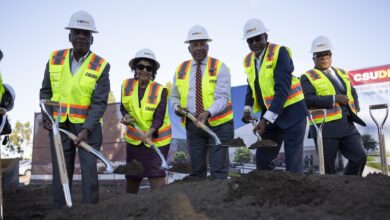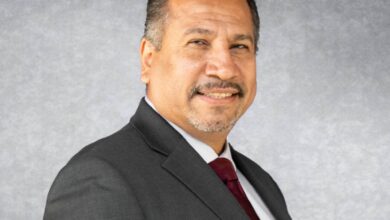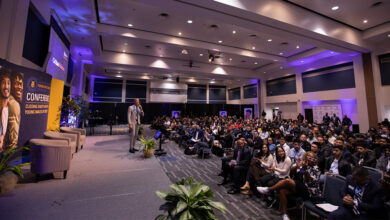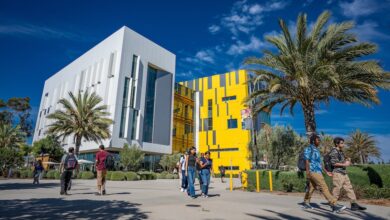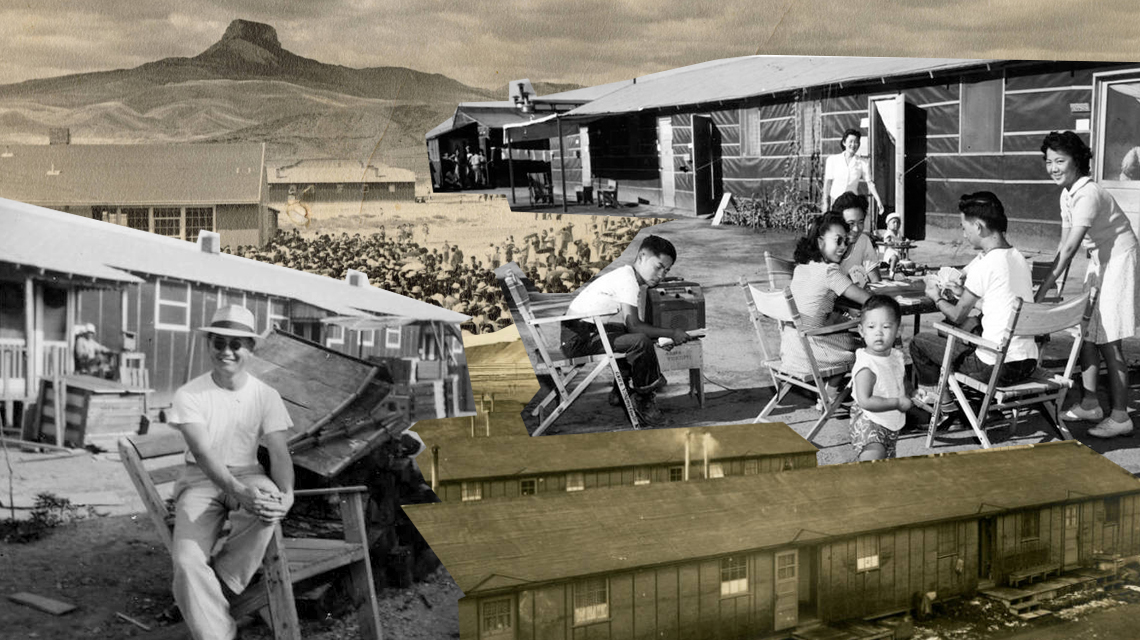 The CSUDH Gerth Archives and Special Collections’ ongoing CSU Japanese American Digitization Project (CSUJAD) is an ambitious effort that preserves the history of California’s Japanese American communities, particularly those lost or uprooted during World War II. In recognition of the project’s scope and success, the CSUJAD has been awarded the 2021 Philip M. Hamer and Elizabeth Hamer Kegan Award from the Society of American Archivists.
The CSUDH Gerth Archives and Special Collections’ ongoing CSU Japanese American Digitization Project (CSUJAD) is an ambitious effort that preserves the history of California’s Japanese American communities, particularly those lost or uprooted during World War II. In recognition of the project’s scope and success, the CSUJAD has been awarded the 2021 Philip M. Hamer and Elizabeth Hamer Kegan Award from the Society of American Archivists.
“It’s really heartening to be recognized,” says Greg Williams, director of the Gerth Archives and principal investigator for CSUJAD. “The award illustrates and recognizes the breadth and depth of the CSUJAD archives and the hard work of our entire team here, and we really appreciate that.”
Williams points out that although Dominguez Hills is the center of the CSUJAD campaign, 29 other institutions are involved in the project, including 17 CSU archives, the California Historical Society, and the Eastern California Museum. “This award is great not only for Dominguez Hills, but for everyone who has worked on the project and the entire set of archives scattered around the CSU and the state,” says Williams.
The Society of American Archivists is North America’s oldest and largest national professional association of archivists. Their Philip M. Hamer and Elizabeth Hamer Kegan Award recognizes “an archivist or institution that has increased public awareness of a specific body of documents for educational, instructional, or other public purpose.”
The CSUJAD project has operated out of the Gerth Archives and Special Collections in the CSUDH University Library since its inception in 2014. So far, they have collected over 46,000 digital objects, all of which are available on their newly revamped website, www.csujad.com. The website includes all of the collections used in the database, lesson plans, digital exhibitions, incarceration camp maps, and many other resources for students and researchers.
“We’ve got tons of stuff,” says Williams. “We continue to get donations of material–letters, photographs, and government documentation from the camps–that essentially document the everyday lives of Japanese Americans before World War II, in the camps, and after.”
“What it reveals is a vibrant community that is stuck in this miasma of racism. As they attempt to assimilate into the culture of Los Angeles and the U.S. in the 1930s, they have this expectation that they are becoming a part of a culture that will not harm them. Yet even before the war, things were tough. After the war, things were outrageous.”
Among the most interesting recent additions are the papers of Aiko Herzig Yoshinaga, an activist for the Japanese American Redress Movement whose research into the background of the incarceration camps provided key evidence that led to compensation for victims of the internment. Another is the Saito Family Collection, a multi-person, multi-generational collection that includes many yearbooks from the 1930s of local middle and high schools. The Saito family’s focus on sports in the years leading up to World War II provide a unique perspective on the community.
Overall, the archive reveals “a broader story about immigrants trying to make good,” says Williams. “It’s a story of both outrage and resilience. The material we’ve put together on Terminal Island in San Pedro is relevant in that regard, because that is perhaps one of the most tragic instances of incarceration among many in the area. This was essentially a fishing village in San Pedro, isolated from the rest of the community, except for going to school with them. The men were fishermen, the women worked in canneries or ran businesses, and things just came crashing down after Pearl Harbor.
“In February 1942, they were told they had a week to get out,” says Williams. “One of the collections that we found was a group of photographs from Terminal Island in March or April of 1942, empty of citizens. The military took photos of all the dwellings and buildings in Terminal Island, prior to wiping them out so the Navy could take over the area.”
Other recent additions include the papers and letters of civil rights activist Fred Korematsu, whose case against Japanese incarceration reached the U.S. Supreme Court in 1944, received from a collection at the California Historical Society. The archivists are also working on translating journals written by first-generation Japanese immigrants to the U.S. “Because they are written in Japanese, the authors are much freer and more opinionated than you often see in English-language letters and journals from the period,” says Williams.
The CSUJAD is an ongoing project, and Williams stresses that they welcome inquiries about donations or loans of material for the collection. Individuals or organizations interested in contributing to the collection are encouraged to contact Williams or CSUJAD Digital Archivist Yoko Okunishi through the project website at www.csujad.com.

